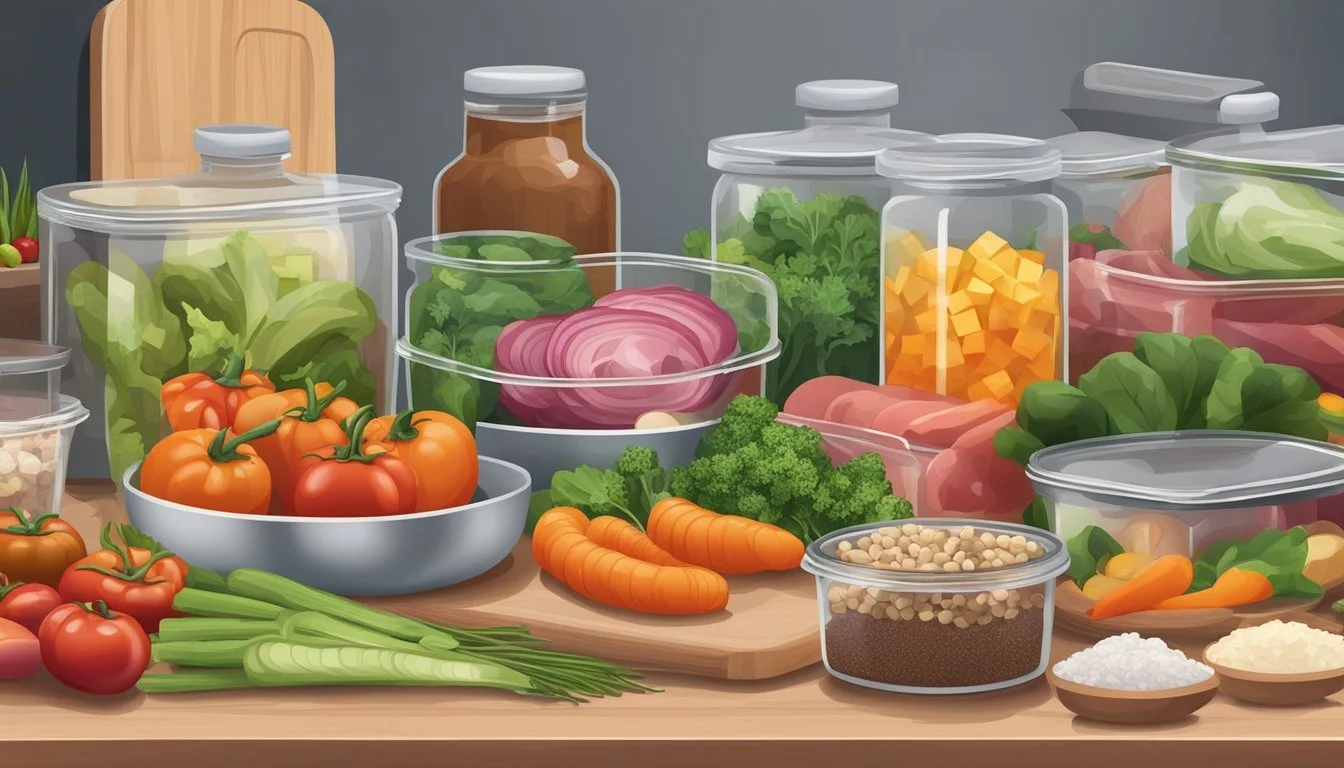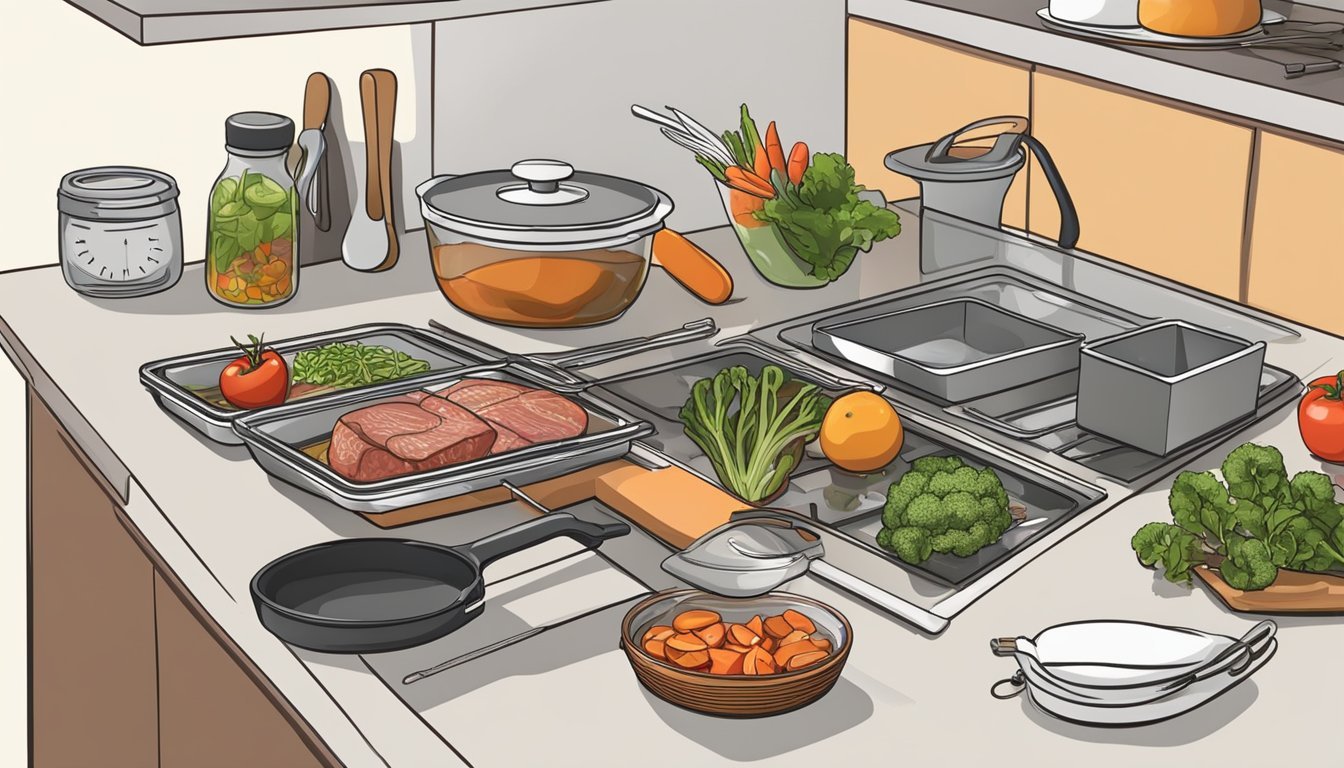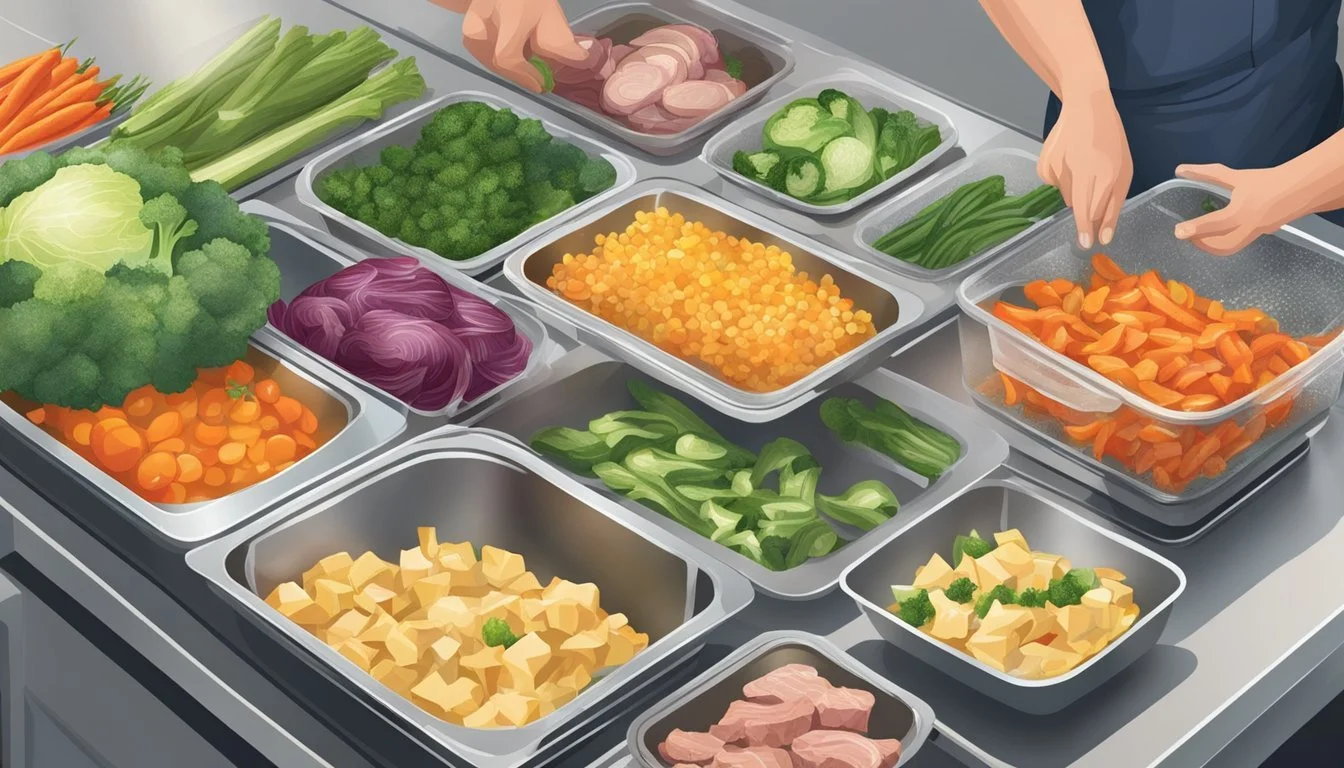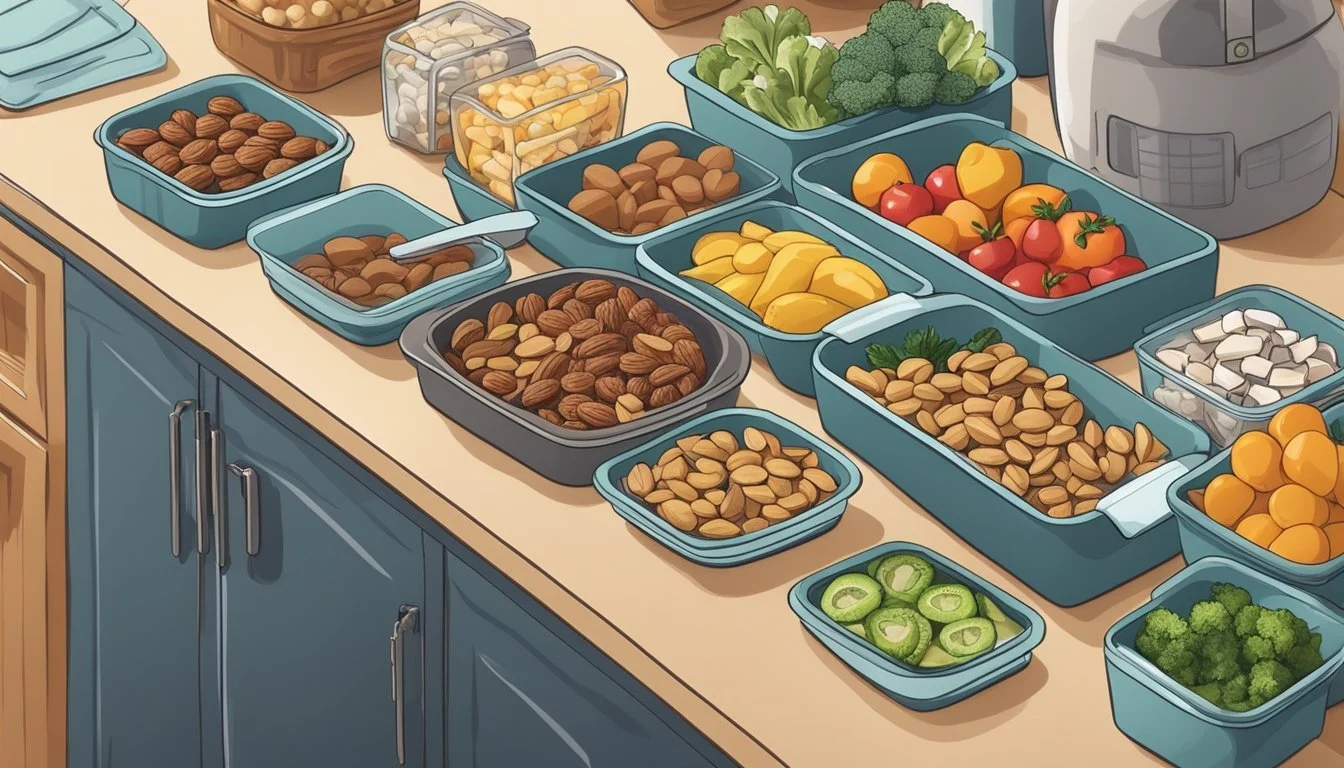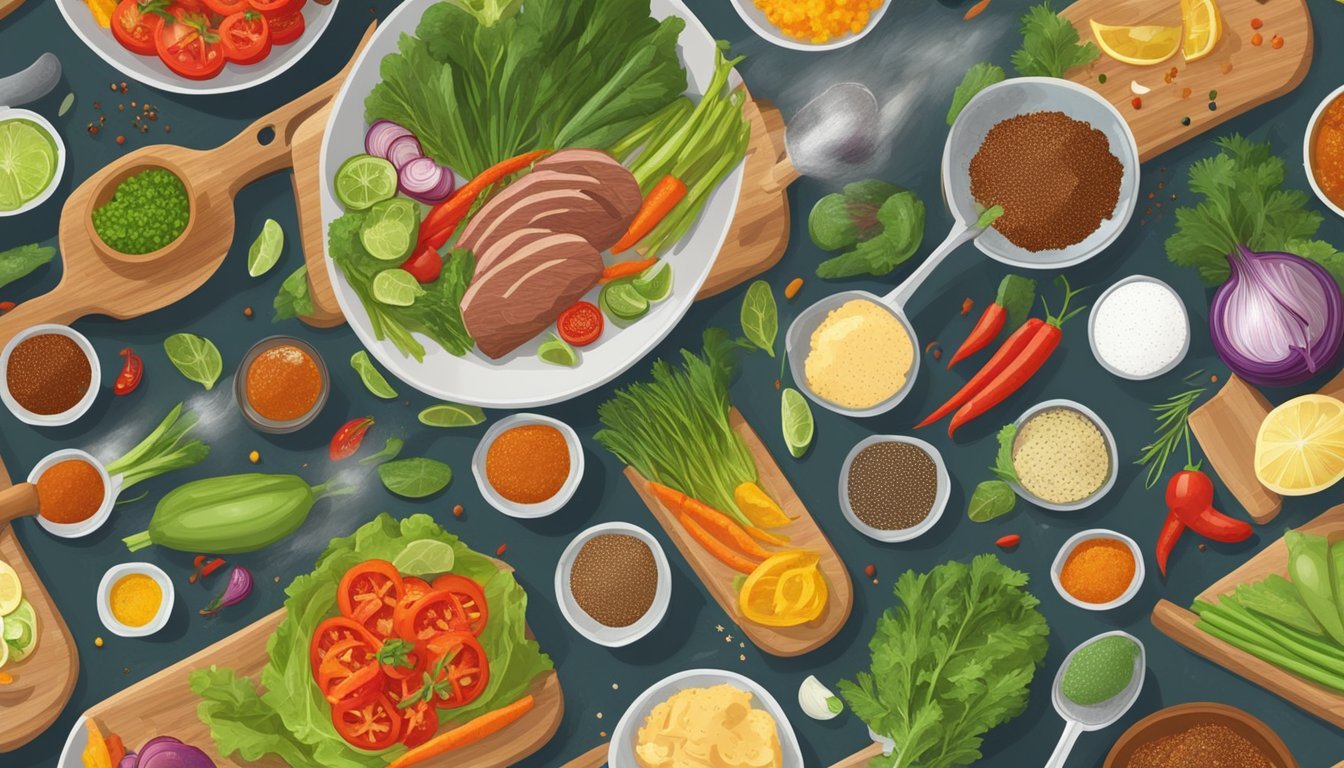Paleo Meal Prep Strategies for a Busy Week
Efficient Planning and Simple Recipes
Adopting a paleo lifestyle offers numerous health benefits and encourages a whole-food approach to eating. The paleo diet, which mimics the dietary habits of our hunter-gatherer ancestors, emphasizes the consumption of animal proteins, fresh fruits and vegetables, and healthy fats from sources like olive oil and nuts, while excluding grains, dairy, and processed foods. For those leading busy lives, meal prep is an invaluable strategy that ensures adherence to paleo principles even through hectic weeks.
Preparing meals in advance can be the difference between sticking to the paleo diet and succumbing to less healthy convenience foods. Effective meal prep involves planning out a week's worth of meals, shopping for paleo-friendly ingredients according to a carefully curated grocery list, and dedicating a few hours to cook and portion meals for the coming days. This method not only saves time and reduces stress but also helps maintain a consistent and nutritious diet.
Incorporating paleo meal prep into a busy week requires an understanding of which foods to include and how to combine them for balanced meals. The focus is on quality protein sources, such as grass-fed meats and omega-3 rich fish, complemented by an array of vegetables, fruits, and nuts. Crafting a diverse menu that varies protein and vegetable intake is key to keeping meals interesting and nutritionally dense, aiding individuals in sustaining a paleo lifestyle successfully.
Understanding Paleo Principles
The Paleo diet harks back to ancestral eating habits, prioritizing whole, unprocessed foods rich in protein, healthy fats, and certain carbohydrates while eschewing grains, dairy, and processed items.
Foods to Embrace and Avoid
Foods to Embrace:
Meats: Preferably grass-fed and pasture-raised
Fish: Especially those high in omega-3 fatty acids
Eggs: A good source of protein
Vegetables: A variety of colorful options
Fruits: In moderation, due to sugar content
Nuts and Seeds: Rich in energy and healthy fats
Healthy Fats: Such as olive oil or walnut oil
Foods to Avoid:
Grains: Including wheat, oats, barley
Dairy Products: Such as milk, cheese, yogurt
Legumes: Beans, lentils, peanuts
Processed Foods and Sugars: Anything with additives or artificial sweeteners
Health Benefits of a Paleo Lifestyle
Adopting a Paleo lifestyle can lead to improved nutrition as it affords the body a higher intake of vitamins and minerals from natural food sources. The adequate consumption of protein supports muscle maintenance and growth, while the preference for healthy fats and the moderation of carbohydrates can aid in managing energy levels throughout the day. Emphasizing foods like vegetables, fruits, and sweet potatoes, can ensure sufficient fiber intake, while the exclusion of grains, dairy, and legumes aims to reduce potential inflammatory responses in the body. It's essential to note that while some individuals may experience significant health improvements, one should also consider individual dietary needs and consult with a healthcare provider.
Essentials of Paleo Meal Planning
Effective paleo meal planning ensures that one's diet is both nutritionally balanced and diverse in flavors. By preparing ahead, individuals can adhere to paleo guidelines even during the busiest weeks.
Creating a Balanced Meal Plan
A balanced paleo meal plan is pivotal for delivering the body's necessary nutrients. Each meal should contain a source of protein, such as grass-fed meats or eggs, along with a variety of vegetables to provide essential vitamins and minerals. Healthy fats derived from sources like olive oil or nuts should be incorporated as well. Here is a simple structure for paleo meal compositions:
Breakfast: Could involve a protein-rich start with eggs and leafy greens cooked in coconut oil.
Lunch (What wine goes well with lunch?) and Dinner (What wine goes well with dinner?) Should aim to include a palm-sized serving of animal protein, complemented by a medley of colorful vegetables and a portion of healthy fats.
Snack: Might consist of raw vegetables with a nut-based dip or a piece of fruit with a handful of almonds for satiety between meals.
Incorporating Variety with Paleo Foods
Maintaining interest in a paleo meal plan is easier with diverse and flavorful recipes. One can include a spectrum of paleo-approved foods to avoid monotony:
Lean meats: Opt for different cuts of beef, poultry, pork, and game meats.
Fish: Seek varieties rich in omega-3 fatty acids, like salmon or mackerel.
Vegetables: Embrace all non-starchy vegetables, especially dark leafy greens for their nutrient density.
Fruits: Incorporate moderate amounts of low-glycemic fruits such as berries.
Nuts and Seeds: Add these in moderation for their beneficial fats.
Planning for a varied menu by including different combinations of these foods for breakfast, lunch, dinner, and snacks throughout the week can prevent dietary redundancy and ensure a well-rounded intake of nutrients.
Smart Grocery Shopping for Paleo
When adopting a Paleo meal regimen, one's journey begins at the grocery store armed with a plan. Efficient shopping is pivotal, ensuring that high-quality Paleo-friendly ingredients are on hand throughout the week.
Building a Paleo-Friendly Shopping List
A Paleo-friendly shopping list emphasizes whole, unprocessed foods, prioritizing meat and vegetables. For meat selections, lean cuts and grass-fed options are ideal as they align more closely with the meats our ancestors consumed. Here's a sample list to consider:
Meat: Chicken breasts, grass-fed beef, wild-caught fish
Vegetables: Cauliflower, garlic, avocado, carrots
Fruits: Seasonal fruits, focusing on a variety of berries
Nuts and Seeds: Almonds, macadamia, pumpkin seeds
Healthy Oils: Olive oil, coconut oil
Including a section for spices is crucial for adding flavor without non-Paleo additives, while vegetables like cauliflower offer versatility for rice or mash substitutions. Garlic and avocados provide robust flavors and healthy fats, respectively, complementing any dish. Berries serve as a sweet treat within the Paleo framework due to their low glycemic index, and nuts and seeds are perfect for snacking or as toppings.
Shopping Tips to Save Time and Money
Smart shopping strategies not only ensure adherence to the Paleo diet but also contribute to both time and financial savings.
Buy in bulk where possible, especially for pantry items like nuts, seeds, and oils.
Opt for seasonal vegetables and fruits to ensure freshness and cost-effectiveness.
Consider local farmer's markets for organic and grass-fed meat choices; these options may offer more competitive pricing than commercial stores.
Utilize grocery delivery services if available to save time. Stick to the list to avoid impulse purchases.
Prepare beforehand: Knowing the exact quantities needed for the week's meal prep can prevent overbuying, which helps in reducing food waste and saving money.
By following these specific strategies for building a Paleo-friendly shopping list and shopping smartly, individuals can maintain their Paleo diet efficiently, even during a hectic week.
Efficient Cooking Techniques and Tools
When preparing Paleo meals, one must prioritize cooking methods that maximize nutrient retention while utilizing time-saving kitchen appliances for efficiency.
Cooking Methods that Retain Nutrients
Paleo meal prep involves selecting cooking techniques that preserve the natural goodness of ingredients. Steaming and blanching are optimal for vegetables, as they minimize nutrient loss while enhancing natural flavors. Meats benefit from slow cooking; this method not only preserves nutrients but also allows for the infusion of spices and healthy fats, like olive oil, which are pivotal to the Paleo diet. The use of coconut aminos as a seasoning can add a savory depth to dishes while keeping them within Paleo guidelines.
Time-Saving Kitchen Appliances
Time-strapped individuals can look to modern appliances to expedite the cooking process without sacrificing quality. An Instant Pot is a versatile tool that can handle various meal components, from tender cuts of grass-fed meats to hardy root vegetables, all while infusing dishes with flavor and saving time. Secondly, a slow cooker is invaluable for batch-cooking stews and soups. One can prepare a large quantity of meal components ahead of time, such as butternut squash for soups, reducing weekly cooking to simple assembly tasks. Both appliances minimize active cooking time and maximize efficiency in a Paleo-friendly kitchen.
Advance Meal Preparation Strategies
Planning carefully and utilizing efficient strategies are crucial when preparing Paleo meals in advance. The following subsections will delve into the specifics of batch cooking and proper storage and reheating to ensure freshness and nutritional value are maintained.
Batch Cooking Basics
Batch cooking is the cornerstone of meal prep, focusing on making large quantities of food at once to save time throughout the week. For those following a Paleo diet, batch cooking basics include selecting recipes that can be easily scaled up and use similar ingredients for efficiency.
Sweet Potato and Veggies: Prepare a large tray of diced sweet potatoes along with a medley of Paleo-friendly vegetables such as broccoli and spinach. Roast them in the oven to create a versatile base that can be incorporated into various meals.
Cauliflower Rice: Make cauliflower rice in bulk by processing the cauliflower in a food processor, then cooking it briefly. It's an ideal substitute for grains and can be seasoned differently for various dishes.
Protein: Cook proteins like ground beef in batches. Season some simply with salt and pepper, and others with a blend of Paleo-friendly spices to add variety to your meals.
Using these batch cooking strategies requires careful planning. One should consider recipes that have overlapping ingredients which can be repurposed into diverse meal options.
Proper Storage and Reheating
Once the meals are prepped, proper storage is imperative to ensure food safety and quality. Here are some tips:
Cool Down: Allow cooked food to cool completely before storing to prevent bacterial growth.
Air-Tight Containers: Use air-tight containers to keep meals fresh. Glass containers are preferable for health and ease of reheating.
Refrigerate or Freeze: Pack meals in portions, refrigerating what you will eat within three days and freezing the rest for optimal longevity.
When it comes to reheating, do so thoroughly to ensure meals are hot and enjoyable:
Oven: Reheat roasted veggies and proteins in the oven to maintain texture.
Stovetop: Use a pan for quick reheating of items like cauliflower rice or sautéed spinach, adding a little water or broth to prevent drying out.
By mastering batch cooking and food storage techniques, one can ensure that they always have a nutritious Paleo meal ready, despite a busy schedule.
Paleo Breakfast Ideas
Starting the day with a satisfying Paleo breakfast can help one sustain energy levels and adhere to their dietary choices effectively. These ideas focus on quick preparation and high nutritional value.
Quick and Nutritious Starters
For those with minimal morning time, a Paleo breakfast can be both speedy and wholesome.
Smoothies: Blend a mix of berries, such as strawberries and blueberries, with a handful of nuts and some unsweetened almond milk for a quick, nutrient-packed drink.
Avocado: Slice an avocado and serve with a sprinkle of lemon juice and a dash of sea salt. Optionally, top with a handful of crushed walnuts or almonds for added protein and crunch.
Egg-Based Breakfasts
Eggs are a staple in the Paleo diet, providing high-quality protein and versatility.
Scrambled Eggs: Whisk eggs with a little olive oil, salt, and pepper, cooking in a skillet until just set. Stir in some spinach and diced bacon for extra flavor and nutrition.
Frittata: Combine beaten eggs with diced sweet potatoes and cooked bacon, then bake until firm. Serve in slices for a convenient meal prep option.
Hard-Boiled Eggs: Boil a batch of eggs to have on hand as an easy, grab-and-go protein source throughout the week. Pair with a small serving of raw nuts for healthy fats.
By incorporating these egg-based dishes, individuals can enjoy a variety of flavors while still aligning with Paleo guidelines.
Lunch Preparation for the Busy Individual
When it comes to lunch preparation for individuals with limited time, utilizing the principles of the paleo diet can help streamline the process while providing nutritious meals. Quick preparation and high-quality ingredients are the focus to ensure lunches are both satisfying and healthful.
Salads and Wraps
Salads and wraps offer a flexible and easy way to create paleo-friendly lunches. One can start with a base of mixed greens, adding in proteins such as grilled chicken or seared steak. Incorporating a variety of vegetables adds both crunch and nutrients to the meal. For a dose of healthy fats and flavor, one should not hesitate to add nuts and seeds. A paleo-approved dressing or a simple olive oil and vinegar mixture can be used to dress the salad.
For wraps, large lettuce leaves make excellent substitutes for traditional wraps, keeping the meal within paleo guidelines. Fillings can include the same proteins and veggies as salads. For added convenience, these can be prepped in advance and kept chilled.
Paleo Wrap Ideas Ingredients
Chicken Avocado Lettuce Wraps Grilled chicken, avocado, diced tomatoes, onions
Steak and Veggie Lettuce Wraps Seared steak slices, bell peppers, spinach
Hearty Soups and Stews
Hearty soups and stews are perfect for batch cooking and are easily reheatable for a quick lunch option. When preparing soups, one should focus on using a rich, homemade bone broth as the base, adding layers of flavor without non-paleo additives. Adding chunks of chicken, beef, or fish provides the necessary protein to keep energy levels steady throughout the day.
Vegetables like cauliflower, carrots, and zucchini can be simmered until tender, and herbs bring depth to the aroma and taste. For those looking to add more substance, diced sweet potatoes or squash are excellent paleo-compliant choices. These dishes often taste better as the flavors meld, making them an ideal make-ahead lunch.
Paleo Soup and Stew Ideas Key Ingredients
Chicken and Veggie Soup Chicken, carrots, broccoli, kale
Beef and Sweet Potato Stew Beef chunks, sweet potatoes, thyme
Dinner Solutions
In pursuit of a healthier lifestyle, dinner can be both a challenge and an opportunity for those with busy schedules. The Paleo diet emphasizes whole, unprocessed foods, and with the right strategies, one can prepare a nutritious dinner with minimal effort.
Effortless Sheet Pan Meals
Sheet pan meals are a boon for efficiency, requiring minimal cleanup and offering rich flavor development. Here's a sample weeknight Paleo dinner using this method:
Garlic Roasted Shrimp with Zucchini: Marinate shrimp in garlic and olive oil, spread them out on a sheet pan with sliced zucchini, and roast until everything is tender and flavorful.
Steak and Roasted Vegetables: Place seasoned steak amidst a variety of vegetables such as cherry tomatoes, asparagus, and onions on a sheet and roast until the steak is cooked to the desired doneness and the vegetables are caramelized.
One-Pot Paleo Wonders
One-pot meals reduce dishwashing time and can meld flavors beautifully. A couple of paleo-friendly one-pot dinner ideas include:
Spaghetti Squash & Meatballs: Cook spaghetti squash in a large pot until soft, then add in homemade meatballs and paleo-friendly tomato sauce, simmering everything together for a hearty meal.
Coconut Tuna Stew: Sauté onions, garlic, and tomatoes, add chunks of fresh tuna, then pour in coconut milk and simmer until the fish is cooked through and flavors are well incorporated.
These strategies should guide one to prepare quick, delicious, and adhering-to-Paleo dinners that satisfy without the stress.
Paleo Snacks and Quick Bites
When it comes to maintaining energy levels and curbing hunger throughout a busy week, paleo-friendly snacks and quick bites are ideal for staying on track. They should be rich in nutrients, easy to prepare, and enjoyable to eat.
Savory Snacks
One can prepare savory paleo snacks that are both satisfying and nutritious. Olives and nuts are perfect for on-the-go snacking as they're packed with healthy fats and can be portioned easily. Here is a quick list of savory snack options:
Almonds, walnuts, and cashews: Rich in omega-3 fatty acids
Vegetable sticks: Slices of cucumbers, carrots, and beets: Dip them in homemade paleo-friendly dressings
Sweet Treats
For those with a sweet tooth, paleo snacking offers a variety of fruity delights that can fit into their dietary needs. Berries, bananas, and cranberries provide natural sweetness and are high in antioxidants and fiber. Some mouth-watering ideas include:
Fruit Salad: A mix of berries and sliced bananas
Dark Chocolate with Nuts: Homemade clusters with a touch of sea salt
Each snack option provides a quick energy boost and supports a paleo lifestyle seamlessly.
Adapting Meal Prep to Your Paleo Lifestyle
To integrate meal prep seamlessly into one's Paleo lifestyle, they should stay cognizant of the diet's core principles, which emulate the eating patterns of their ancestors. This entails a focus on whole foods, such as lean meats, fresh fruits, vegetables, and healthy fats, while excluding processed foods, grains, and dairy.
One begins by strategizing their weekly meal planning. It involves selecting varied Paleo-approved recipes that provide both nutrition and enjoyment. Planning should account for each meal to ensure adherence to Paleo mandates and to prevent last-minute non-compliant choices caused by a lack of preparation.
Here's a simplified breakdown of food options for Paleo meal prepping:
Proteins: Grass-fed meats, fish rich in omega-3 fatty acids, eggs.
Vegetables: A diverse array to maintain micronutrient intake.
Fats: Oils from fruits and nuts, such as olive oil or walnut oil.
Fruits and Nuts: For snacking and addition to meals.
When prepping meals, individuals may consider batch cooking Paleo recipes, like Butternut Squash Soup, and store them for later use. This strategy ensures easy access to healthy options. Similarly, preparing easy-to-cook ingredients like a homemade chicken apple sausage ahead can save time during the week.
For individuals with a hectic schedule, dedicating a block of time on the weekend can set them up for success. During this time, they can chop vegetables, marinade proteins, and pre-cook certain dishes. Ensuring meals are exciting and palatable is crucial, possibly by experimenting with different herbs and spices which align with Paleo standards, thus keeping meal prep from becoming monotonous.
Balance and simplicity are keys to sustainable meal prepping within a Paleo lifestyle. Through meticulous planning and preparation, individuals can maintain their dietary choices regardless of their busy calendars.

